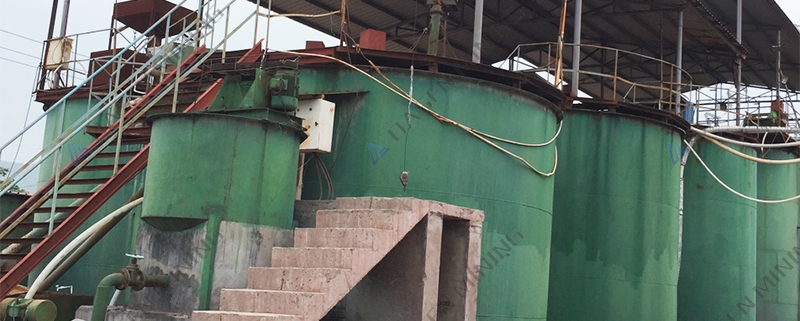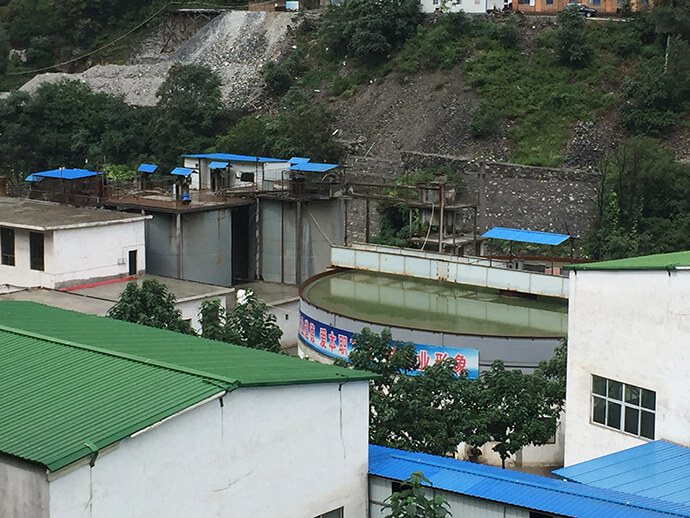Is gold extracted by carbon leaching?
Gold extraction by carbon leaching (CIL) is a process of adding activated carbon to the pulp and leaching and adsorbing gold at the same time. It is one of the main methods of gold beneficiation at present. The process is developed on the basis of CIP. The two steps of cyanide leaching pulp and activated carbon adsorption are combined into one, which reduces the number of leaching tanks, shortens the process flow, and reduces the capital investment and production cost.
01 Slurry impurity removal
Before leaching and adsorption of cyanide pulp, it is necessary to remove wood chips and other impurities in the pulp to avoid impurities adsorbing gold in the pulp, preventing it from mixing into rich carbon and blocking the pipeline and carbon screen. If necessary, concentrate the pulp and add descaling agent, which can reduce the scaling on the surface of activated carbon and screen.
In general, a impurity removal operation is set before concentration and after grinding. The medium frequency linear vibrating screen is often used as the impurity removal equipment, and the screen hole size is selected as small as possible on the premise of ensuring that the screen surface does not run.
02 pre leaching concentration
The concentration of the slurry will not only affect the leaching time but also the suspended state of the activated carbon. Therefore, in order to achieve a suitable leaching concentration of the pulp, the pulp needs to be dehydrated by a thickener before leaching.
When the overflow concentration of grinding and classification is 18-22%, it is not suitable for direct leaching. The pulp must be concentrated first. At this time, it is recommended to use a high-efficiency thickener with a small footprint and high concentration efficiency.
03 leaching and adsorption
An obvious feature of the CIL process is that the gold leaching and adsorption operations are carried out at the same time, and the size and quantity of the leaching tank need to be determined according to the processing capacity of the gold ore concentrator.
The impurity-removed and concentrated ore pulp is driven into a high-efficiency leaching tank arranged in a stepped shape, and 5-12 leaching tanks are generally arranged in series. Cyanide is added to the first one or two leaching tanks, and activated carbon is added to the latter leaching tank. Since sodium cyanide has just been added to the first one or two tanks, the amount of gold leached is relatively small. Therefore, most gold ore charcoal leaching concentrators use the first one or two leaching tanks as prepreg tanks, and the latter leaching tanks are leaching adsorption tanks.
Generally, each leaching tank is equipped with a carbon screen to separate the activated carbon and the pulp. Activated carbon and ore slurry are adsorbed in countercurrent, fresh activated carbon is added from the last leaching adsorption tank, and gold-loaded carbon is discharged from the first leaching adsorption tank. Activated carbon becomes gold-loaded carbon due to the adsorption of gold in the slurry. After the adsorption operation is completed, the slurry containing gold-loaded carbon is sent to the carbon sieve through an air lift to separate the slurry from the activated carbon. After sieving and washing, the slurry is sent to the desorption electrolysis operation. The gold grade of the slurry solution after adsorption by this method is generally 0.01-0.03g/m³.
04 Desorption electrolysis
At present, the commonly used gold-loaded carbon desorption method is the high temperature and high pressure desorption method, that is, under the conditions of high temperature and high pressure, anions that are easily adsorbed by activated carbon are added to the desorption system to replace Au(CN)2- to obtain gold mud and lean carbon. , So as to achieve the desorption of gold.
The Pregnant liquid obtained by desorbing the gold-loaded carbon is recovered by ionization, thereby obtaining solid gold.
05Pyrometallurgy
In production practice, most gold ore charcoal leaching concentrators use pyrometallurgical smelting, that is, gold ingots are directly smelted from the gold mud obtained through simple pickling and impurity removal operations. After fire smelting, the purity of gold ingots can reach more than 99.99%.
06Activated carbon regeneration
The activated carbon after adsorption and desorption needs to be regenerated to restore its adsorption performance. Generally, after desorption, the activated carbon is pickled to remove the carbonate and other accumulations. After repeated use, it needs to be thermally activated to restore the adsorption activity of the activated carbon, and then it can be recycled again. The equipment required for activated carbon regeneration operations mainly includes an activated carbon pickling tank, neutralization tank, regeneration kiln, fine carbon separation screen, water quenching tank, etc.
The gold ore carbon leaching gold extraction (CIL) process is highly adaptable to gold ore and is suitable for most types of gold ore. The process is simple, the investment cost is low, the operation is easy, and the gold recovery rate is high. In production practice, it is recommended to do a good job of beneficiation test, determine the scientific and reasonable process flow and technical parameters according to the beneficiation test results, and avoid random application or simple copying.
We can provide you with more information about gold heap leaching plant. If you have any questions, please contact: Whatsapp:+8613319277356, Email:[email protected]







